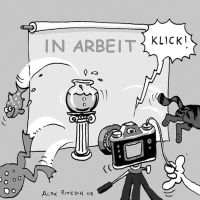Arowana Tetra (Gnathocharax steindachneri)
| Arowana Tetra Gnathocharax steindachneri | |
|---|---|
| Name | Arowana Tetra |
| Name Lat. | Gnathocharax steindachneri |
| Family | Smallscale Pike Characins |
| Family lat. | Acestrorhynchidae |
| Order | Characins |
| Order lat. | Characiformes |
| Origin | Brazil |
| Habitat | Rivers, streams |
| Diet | Carnivore |
| pH | 5.5-7.5 |
| Behavior | Peaceful |
| Keeping | Group |
| Care Level | Easy |
| Reproduction | Egg scatterer |
| Breeding | Difficult |
| Life Span | N/A |
| Protection | No |
| Metric Units | |
| Size | 6 cm |
| Temperature | 23-27 °C |
| Hardness | 2-12 °dH |
| Aquarium | ~ 120 l |
| US Units | |
| Size | 2.4" |
| Temperature | 74-81 °F |
| Hardness | 36-214 ppm |
| Aquarium | ~ 30 gal |
Distribution and habitat
The Red-striped Half-bills are native to Kalimantan Barat, the Indonesian part of the island of Borneo. They live in slow-flowing, shady forest streams and ponds, often with dense underwater vegetation, where they stay on the water surface to forage.
Maintenance
The aquarium should have a varied, partly dense edge planting, with shelters and hiding places (roots) and provide sufficient swimming space. A dark substrate covered with some foliage (sea almond tree, beech), shaded light (floating plants) and soft, slightly acidic water is ideal.
No ammonia, ammonium and nitrite should be detectable, the nitrate value should not exceed 100 mg/l. To ensure the water quality and oxygen content, a filter and heater adapted to the aquarium size is required, as well as lighting for the species-appropriate day-night rhythm of the animals.
Diet
They prefer to eat approach food (mosquitoes, etc.) from the water surface. The food supply consists of live, frozen and dry food. For a balanced diet, feed at least once a day with a high-quality dry food (flakes, granules, pellets) as well as daphnia, moina, artemia, or white mosquito larvae (live or frozen). Aphids, fruit flies and fruit flies are also readily eaten. No food is taken from the bottom
Only feed as much as will be eaten within a few minutes. A regular and varied diet promotes health and increases resistance.
Behaviour and compatibility
They are peaceful fish that are best kept in a harem, one male with several females. Males form small territories and are intra-species quarrelsome. They can be kept very well in a community tank with other small, peaceful and calm, but not surface-oriented fish
Basically, only mutually compatible fish species with similar demands on water conditions and water temperature should be socialized.
Sex dimorphism
The males have an anal fin (andropodium) that has been transformed into a mating organ. The smaller females appear more rounded.
Reproduction and breeding
They are live-bearing fish. Internal fertilization is provided by the male's gonopodium. After 6-8 weeks of gestation, 1-5 fry are born daily, over a period of 2-3 weeks. They are fully developed at birth and can immediately begin feeding on their own.
Fry must be fed several times a day with live rearing food (e.g. Artemia nauplii). Breeding is hardly possible in community tanks, as the fry are easy prey.
Important
A gapless cover of the aquarium is necessary, because the jumpy animals can jump well.
The foliage (sea almond tree, beech, oak, etc.) enriches the water with humic substances and naturally lowers the pH
The well-being of the fish should be checked regularly. The temperature should be checked daily, the pH, hardness and nitrate value at least every 14 days. Regular partial water changes are recommended, even if the contaminant level has not yet reached the upper limit. Sudden changes in water quality should be avoided. Newly introduced fish must be accustomed slowly to the water in the aquarium.
Further literature can be found in your pet store.
References
Text: petdata; Image: Anton Lamboj
Source: BMELV (1998): Tierschutzgutachten - Haltung von Zierfischen (Süßwasser); BAENSCH & RIEHL (1997): Aquarien Atlas Bd. 5, Mergus Verlag; ENGELMANN (2005): Zootierhaltung - Tiere in menschlicher Obhut: Fische, Verlag Harri Deutsch
- Gemäß § 21 Abs. 5 Tierschutzgesetz idgF
